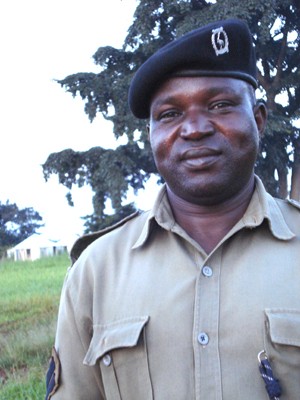
For a local policeman, joining efforts with a USAID program to address sexual and gender-based violence in his community was a welcome challenge.
“I have daughters myself and am concerned about this issue. I had heard about sexual and gender-based violence before, but honestly, when USAID came and talked to the entire community about it for the fi rst time, much of the information was new – particularly the connection between sexual and gender-based violence and HIV transmission,” said Okot Paul, the sub-country police post in-charge.
The USAID program is helping communities that have been affected by conflict understand and address the link between HIV transmission and sexual and gender-based violence. The stresses caused by living through years of war and violence such as tight living quarters for families; constant threats to safety; and lack of access to safe drinking water, food, and shelter result in psychological trauma and a subsequently high incidence of alcohol and drug abuse. All of this can dramatically affect human interactions, creating an environment that normalizes violence, including sexual and gender-based violence. This kind of violence can become a strong contributing factor to rising HIV transmission rates.
“It’s like a circle that we are trying to stop,” said Paul. USAID helps communities by linking police, community leaders, women, and young people to increase awareness and strengthen reporting and treatment services and systems that can address sexual and genderbased violence. Communities nominate “animators” who are trained by USAID about how to identify sexual and gender-based violence, how to report incidences of violence, and how to refer survivors to medical and/or psychosocial treatment.
Once trained, animators provide mediation services; offer consultation and advice; escort survivors to the police for reporting or to health clinics for treatment; and follow up with survivors to see how they are doing. They also learn how to consult with other key community leaders to help resolve crises that cannot be solved by formal proceedings.
“After our animator training, we had so many cases referred to us. Already, I have seen 40 cases at my offi ce. I have referred seven cases to court and others have been settled within homes,” said Paul. “I want to see a community free of violence. That’s what we are working toward.”







Comment
Make a general inquiry or suggest an improvement.